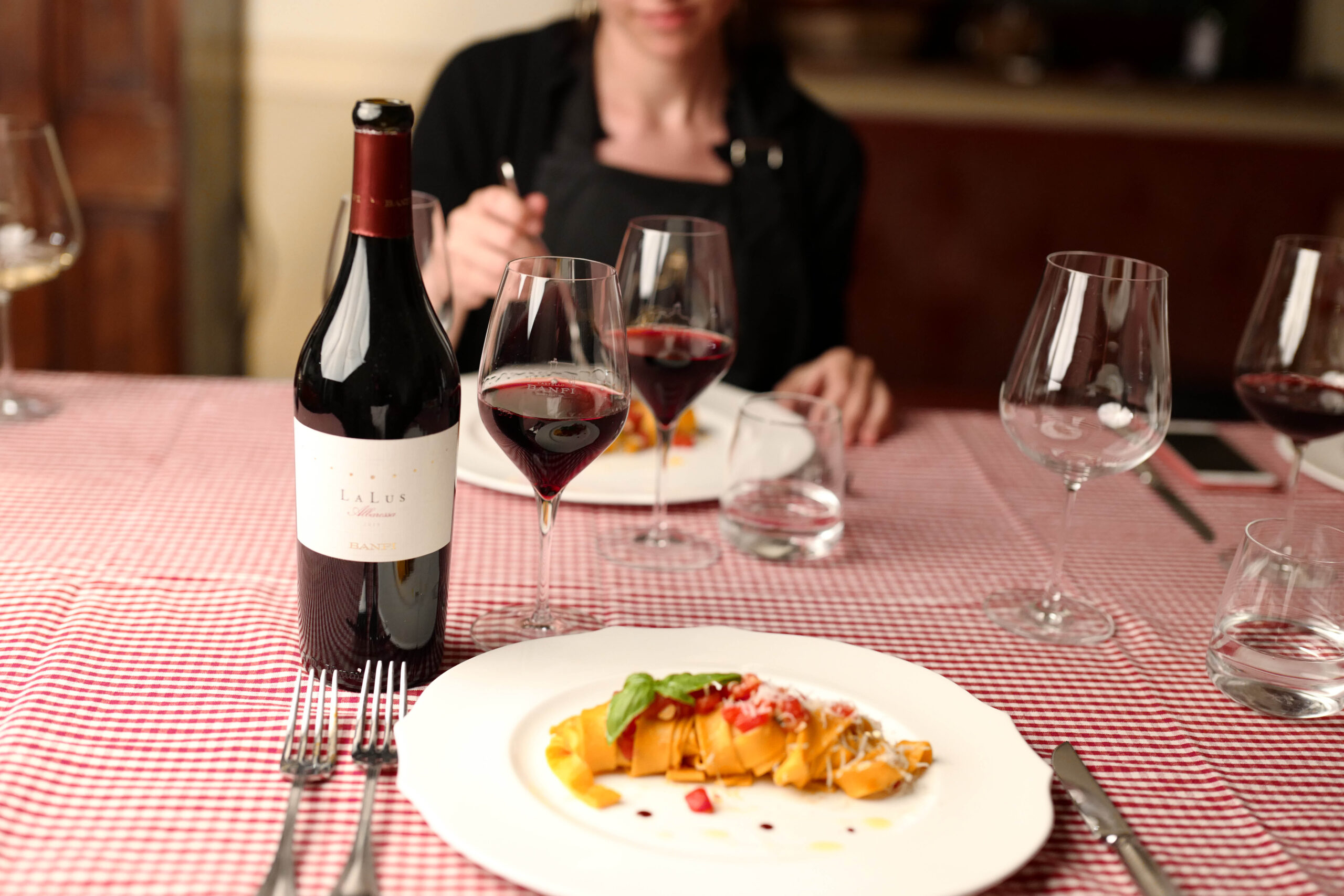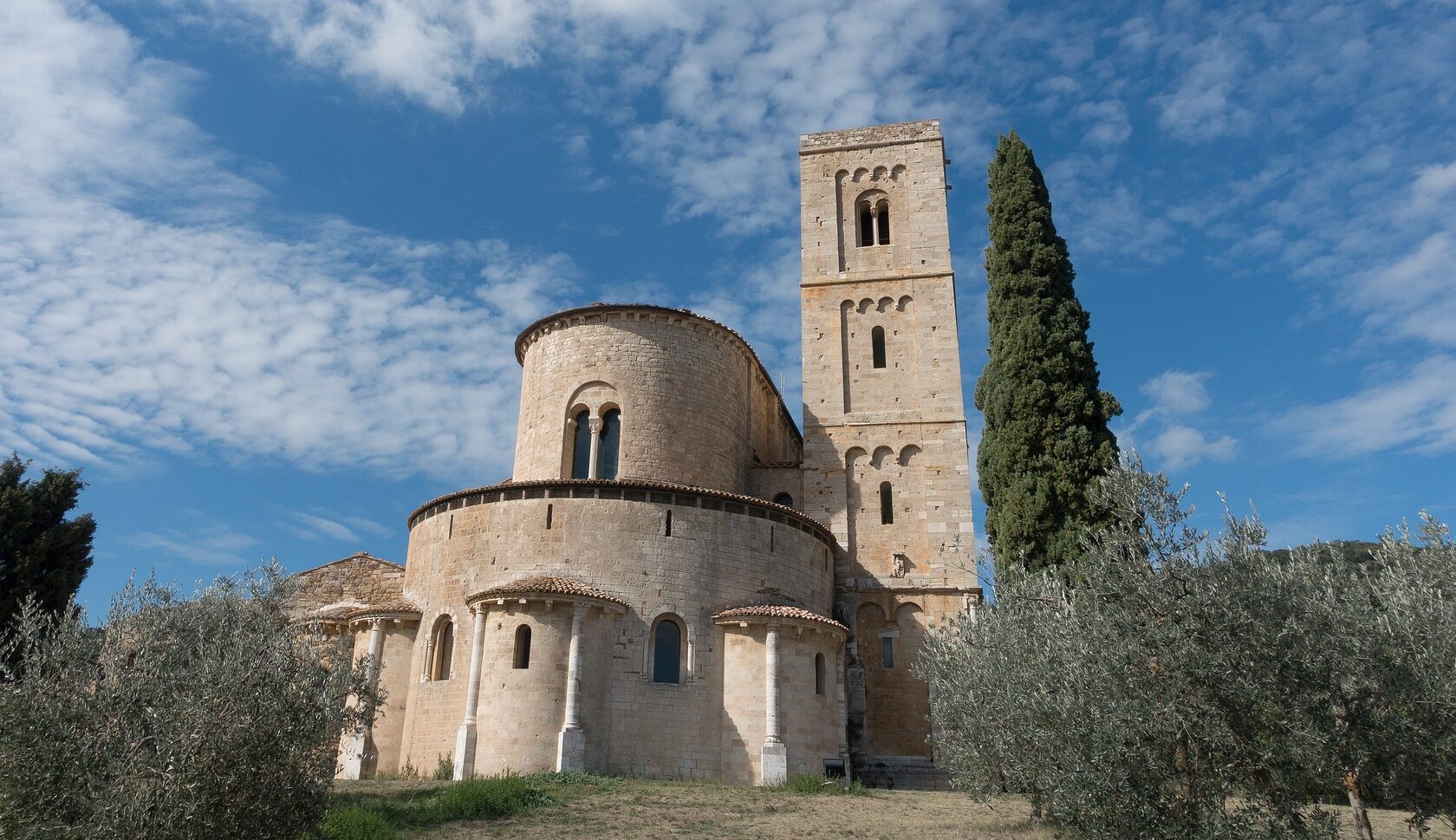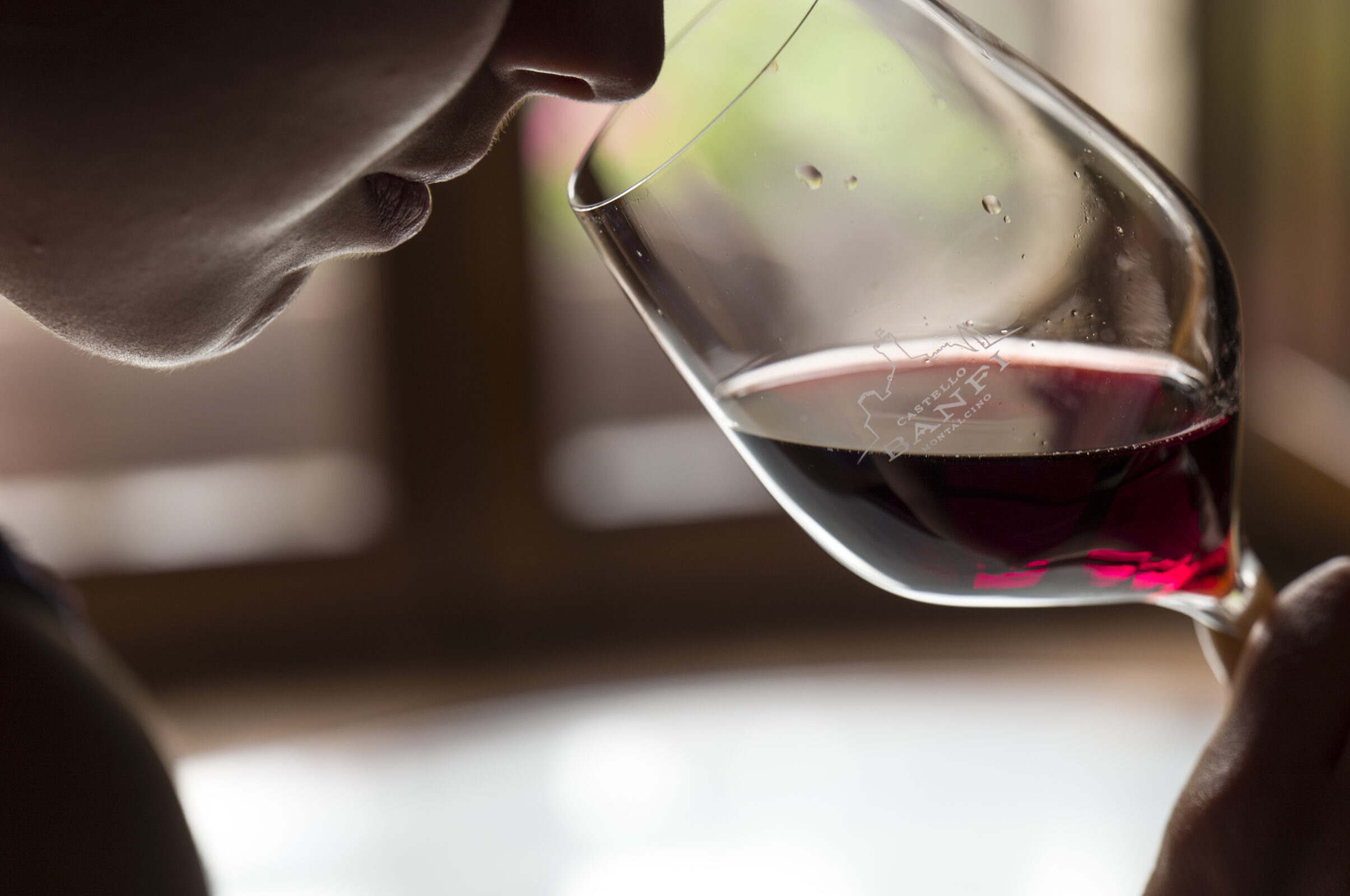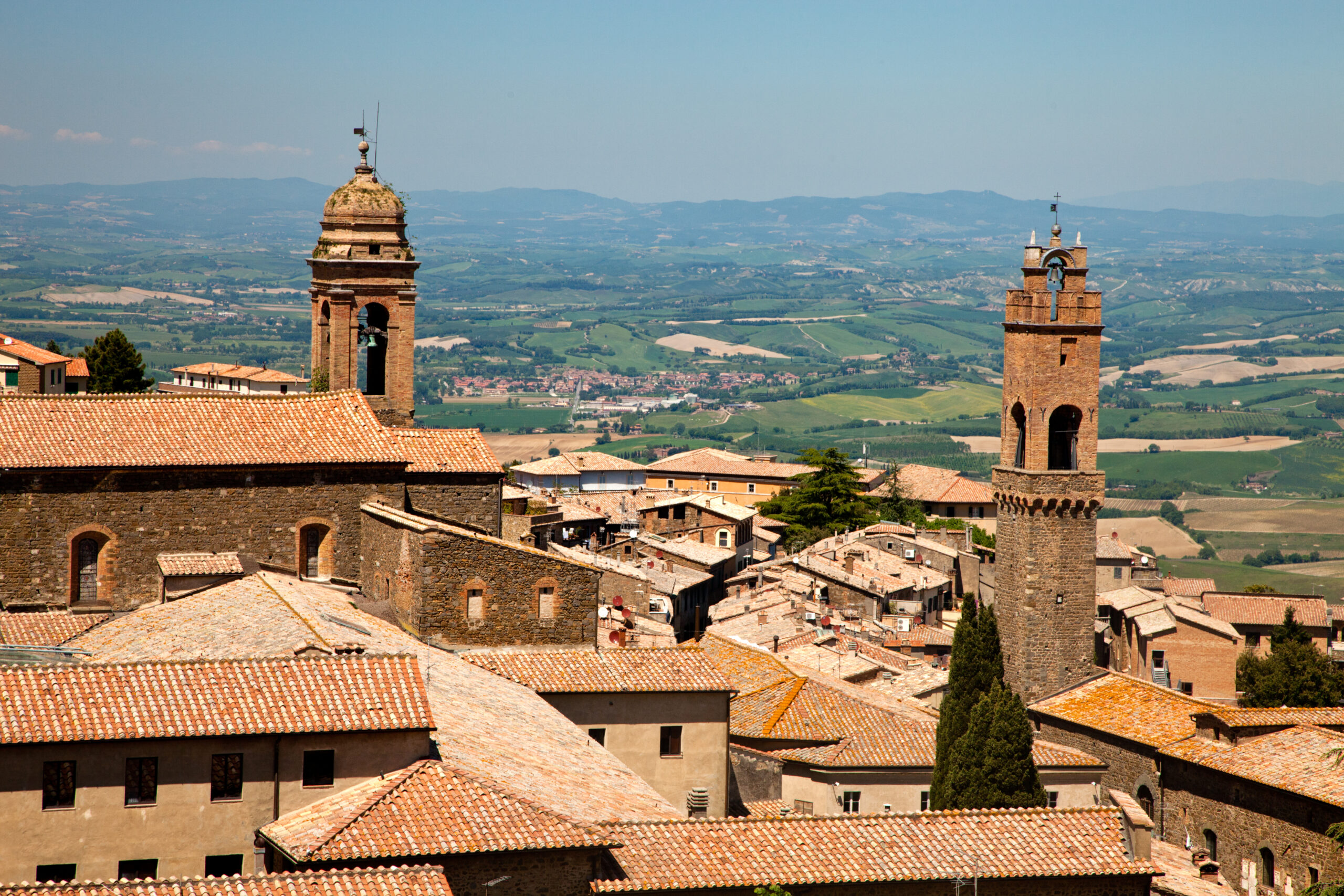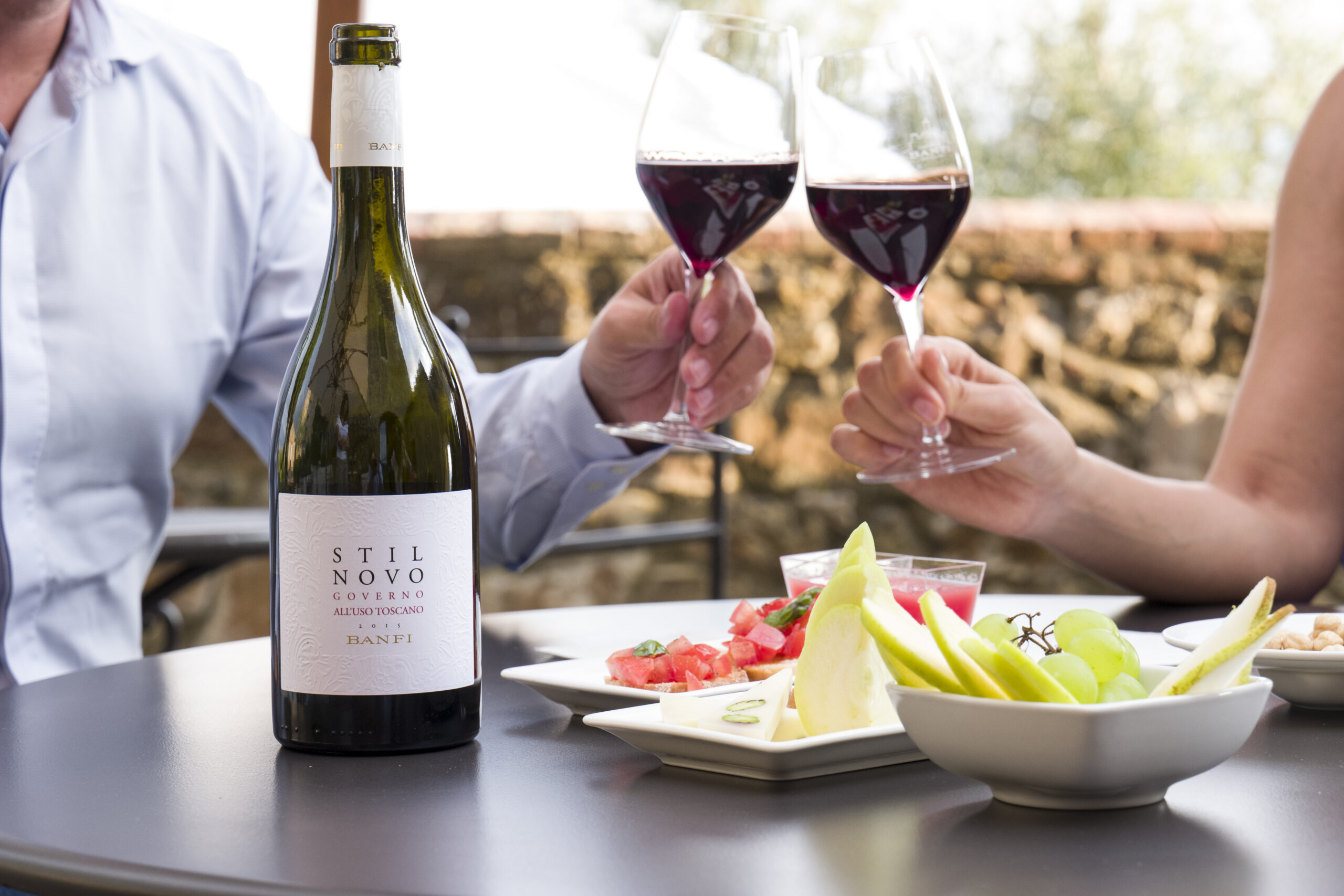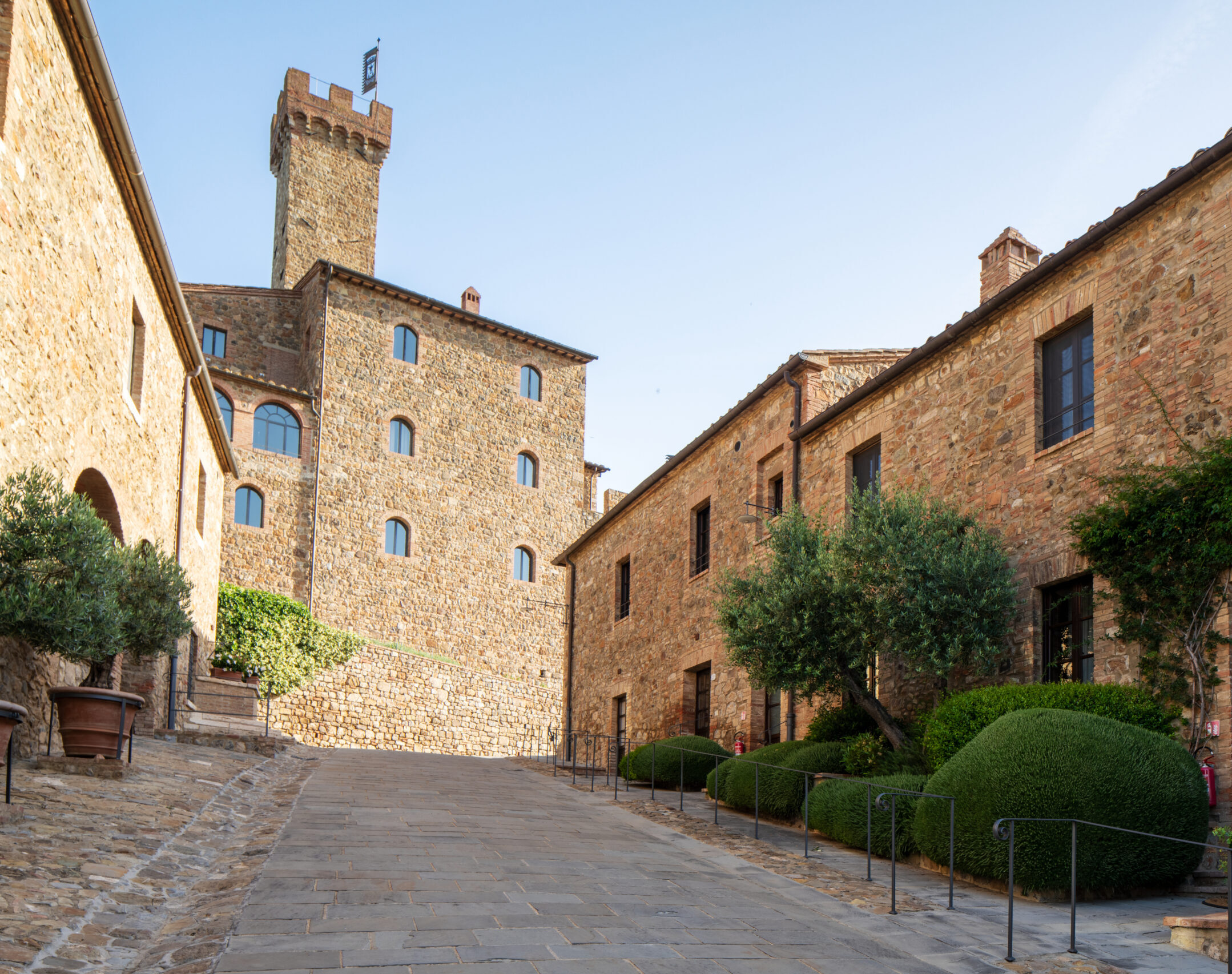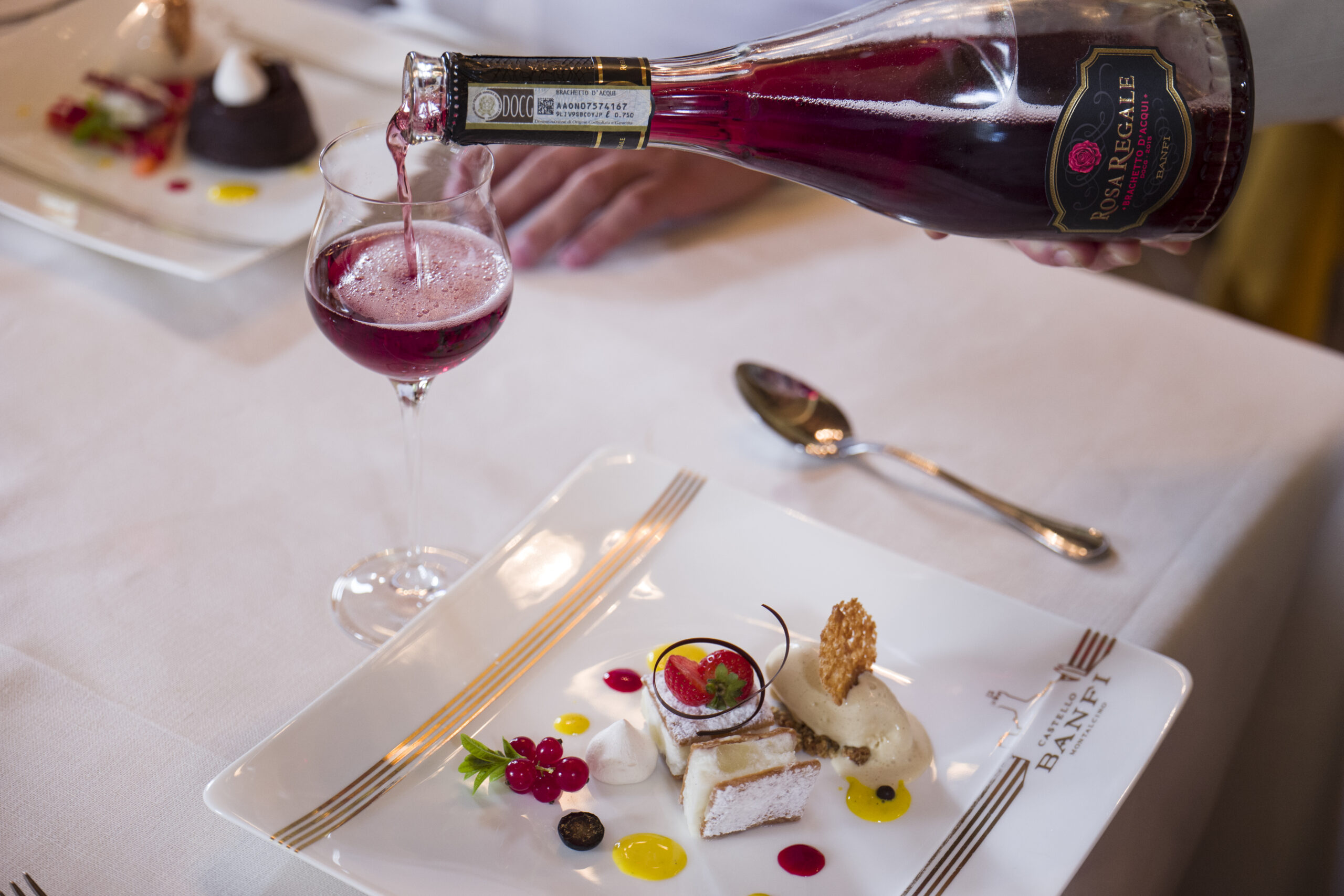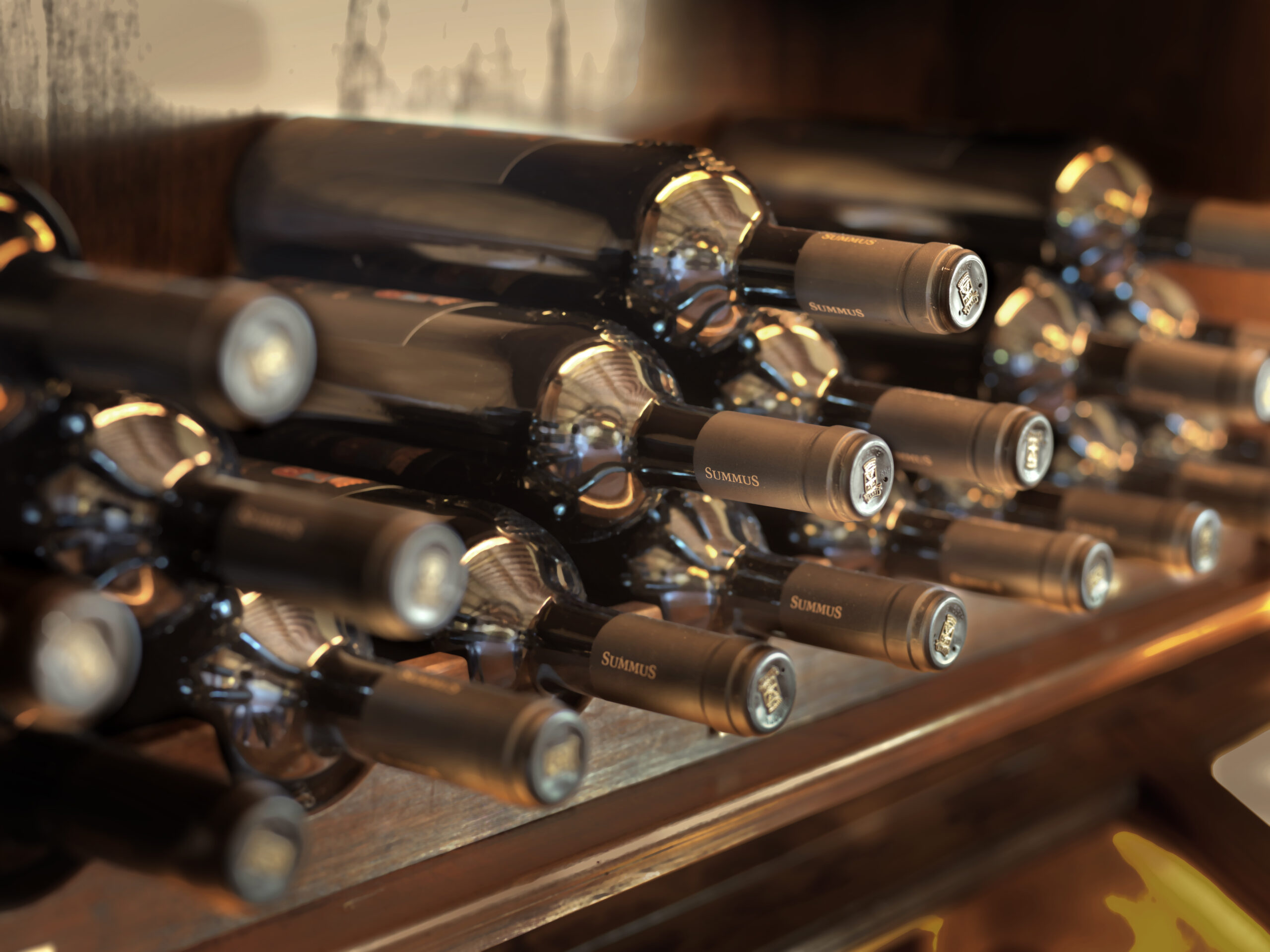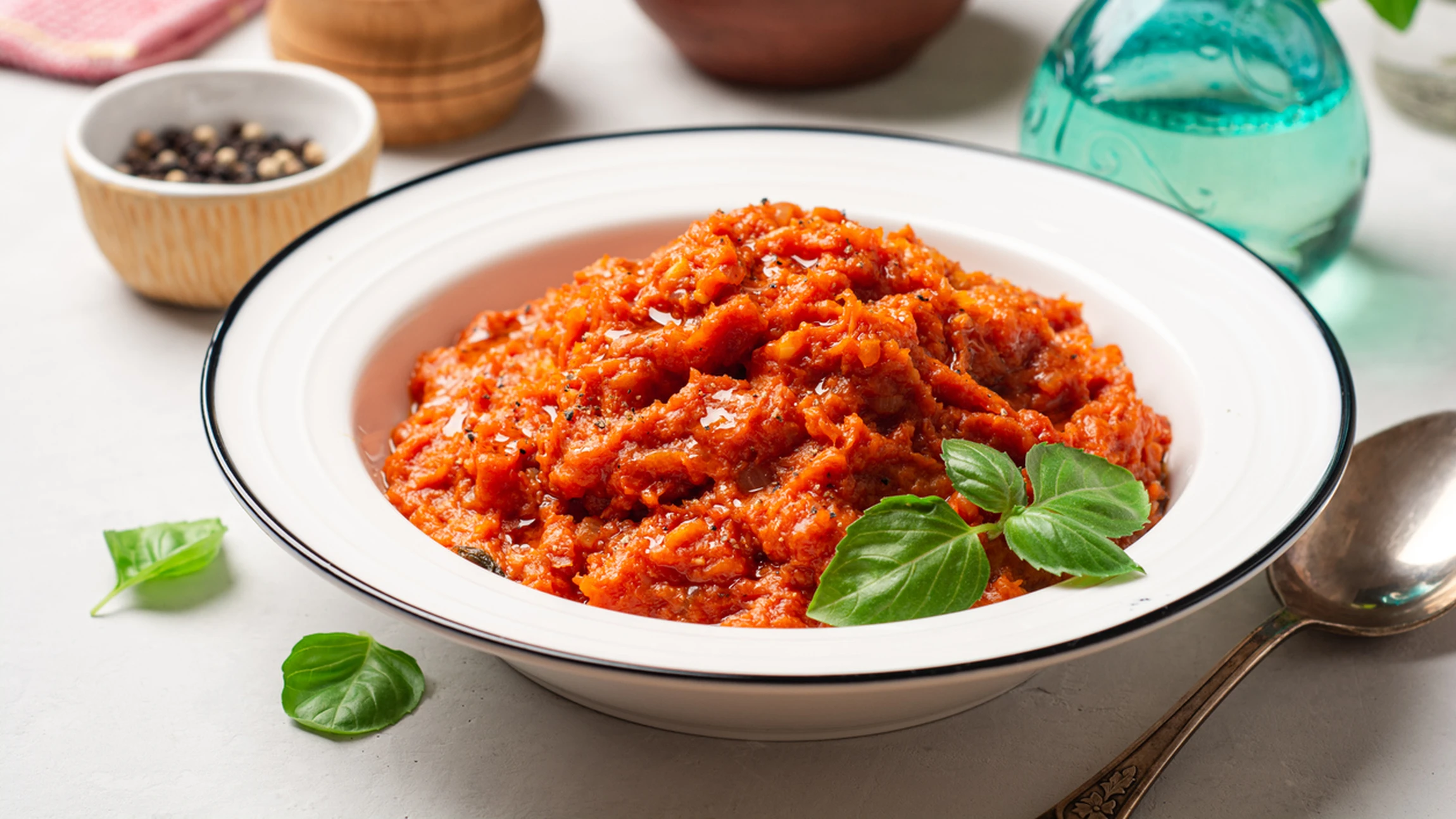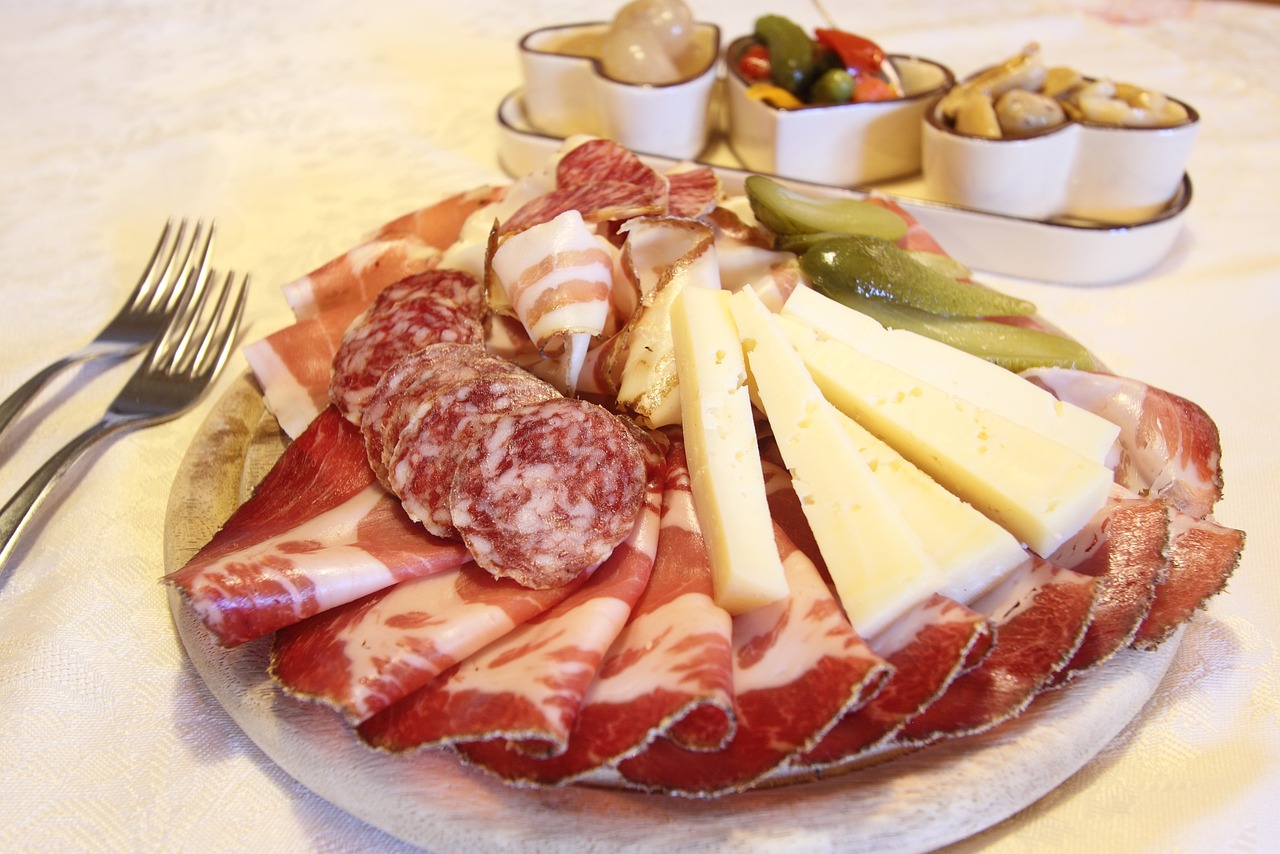Toscana ed enotourism: scopri tutti i segreti del binomio per eccellenza del turismo italiano sul blog di Castello Banfi Wine Resort.
Wine tourism in Tuscany: what to know
Oenotourism, a valuable combination of culture and wine tasting, is a sensory experience of rare beauty, to be lived in places rich in charm and attraction, not only for the richness of their soils, but also for the artistic, cultural and landscape treasures they contain. Wine tourism in Italy, and in Tuscany in particular, a region that is home to renowned vines and millennial traditions, finds one of its greatest expressions. In fact, wine tourism in Tuscany offers the opportunity to immerse oneself in the wine culture, to taste fine wines and to embrace the authenticity of a millenary tradition, offering an unforgettable journey.
Toscana ed enoturismo è un binomio simbolo dell’eccellenza italiana nel settore turistico dato che, secondo gli ultimi dati, sono circa 14 milioni i visitatori che ogni anno si recano tra le verdi colline e i rigogliosi vigneti di questa regione per visitare le storiche cantine, dove l’arte dei viticoltori si sposa con la bellezza dei paesaggi, e per concedersi qualche giorno di relax immersi nella natura presso gli incantevoli borghi e wine resort, come Castello Banfi Wine Resort presso Poggio alle Mura.
Wine tourism in Tuscany: the data
Ma approfondiamo brevemente i dati sull’enoturismo in Toscana. Secondo l’ultimo rapporto Coldiretti/Ixè, l’enoturismo in Italia è un fenomeno che coinvolge il 58% degli italiani: il buon cibo e il buon vino sono infatti alcune delle ragioni principali per cui una città viene scelta come meta turistica per il 56% degli intervistati. Nel caso della Toscana poi, dove il turismo enogastronomico si fonde con il turismo d’arte e quello naturalistico, i numeri sono ancora più positivi.
L’enoturismo in Toscana è ormai un fenomeno così consolidato da essere tra i più attrattivi del panorama italiano. In fatto di turismo legato al vino questa regione si colloca inoltre al terzo posto, dopo Piemonte e Campania (secondo i dati Isnart per Enit), per la presenza nei pacchetti turistici “food and wine”. In base ai dati sull’enoturismo in Toscana del 2022, elaborati dall’Ufficio regionale di Statistica, i turisti sono stati oltre 13 i milioni e più di 42,7 milioni i pernottamenti, con un forte incremento rispetto al 2021.
The great success of wine tourism in Tuscany can also be seen on social channels: visits to wine tourism offer pages grew from March 2021 to February 2022 by 136.29%.
Moreover, wine tourism in Tuscany fuels not only the tourism sector but also the production sector, with a considerable turnover. According to the latest estimates of the Ismea-Qualivita Observatory, the PDO-PGI wine sector in Tuscany is worth 1004 million euro (86.9% of the country's total certified production). This is according to Roberta Garibaldi, vice-president of the Ocs Tourism Committee, one of the leading experts in wine tourism in Tuscany and Italy.
Tuscany and wine tourism: an ancient history
Il primato della Toscana nel settore enoturistico è antico, anzi: si deve proprio a questa regione la nascita del turismo del vino in Italia, grazie alle iniziative Cantine Aperte e Calici sotto le stelle del 1993, oltre al Movimento Turismo del Vino.
Ma le linee guida dell’enoturismo sono state formalizzate solo negli anni Duemila, con la nascita delle “strade del vino”, ossia percorsi tutelati che valorizzano luoghi e produzioni, e solo nel 2019 è stato emanato il cosiddetto Decreto Enoturismo, che regolamenta le visite in cantina, la fatturazione delle attività legate al turismo del vino, le competenze del personale e le linee guida in merito ai requisiti e agli standard minimi di qualità per l’esercizio dell’attività enoturistica.
Law on Wine Tourism in Tuscany
Although the decree is valid throughout Italy, some regions are further fine-tuning their legislation on the subject to better protect and enhance this form of tourism, and Tuscany is among them. The law on wine tourism in Tuscany in fact saw a development in the spring of last year with Regional Law no. 15 of 24 May 2022 (Disciplina dell'oleoturismo e dell'ospitalità agrituristica. Amendments to Regional Law 30/2003).
It regulates wine tourism in Tuscany with regard to:
property intended for agritourism;
organisation of promotional events for traditional or quality company products;
wine and oil tourism activities and requirements for their performance;
minimum quality standards to be met.
Nuova definizione di Enoturismo
Di particolare interesse la nuova definizione di enoturismo che riportiamo integralmente: “Per enoturismo e oleoturismo si intendono tutte le attività di conoscenza rispettivamente del vino e dell’olio extra-vergine di oliva espletate nel luogo di produzione, le visite nei luoghi di coltura, di produzione o di esposizione degli strumenti utili alla coltivazione della vite e dell’olivo, la degustazione e la commercializzazione delle produzioni vinicole e oleicole aziendali anche in abbinamento ad alimenti, le iniziative a carattere didattico e ricreativo nell’ambito delle cantine e dei vigneti, dei frantoi e degli oliveti”.
L’emanazione di una legge sull’enoturismo in Toscana riveste un’importanza fondamentale, fungendo da baluardo per la tutela dei produttori locali e il sostegno alla loro preziosa attività vinicola. Tale provvedimento garantisce una cornice normativa solida, capace di preservare tradizioni secolari e stimolare l’eccellenza nel settore. Parallelamente, tale legge diventa strumento di protezione per i visitatori, assicurando standard di sicurezza, qualità e autenticità nelle esperienze offerte. In tal modo, si coniuga la valorizzazione del patrimonio enologico con un’accoglienza consapevole e gratificante per tutti coloro che scelgono l’enoturismo in Toscana come forma di viaggio e scoperta.

